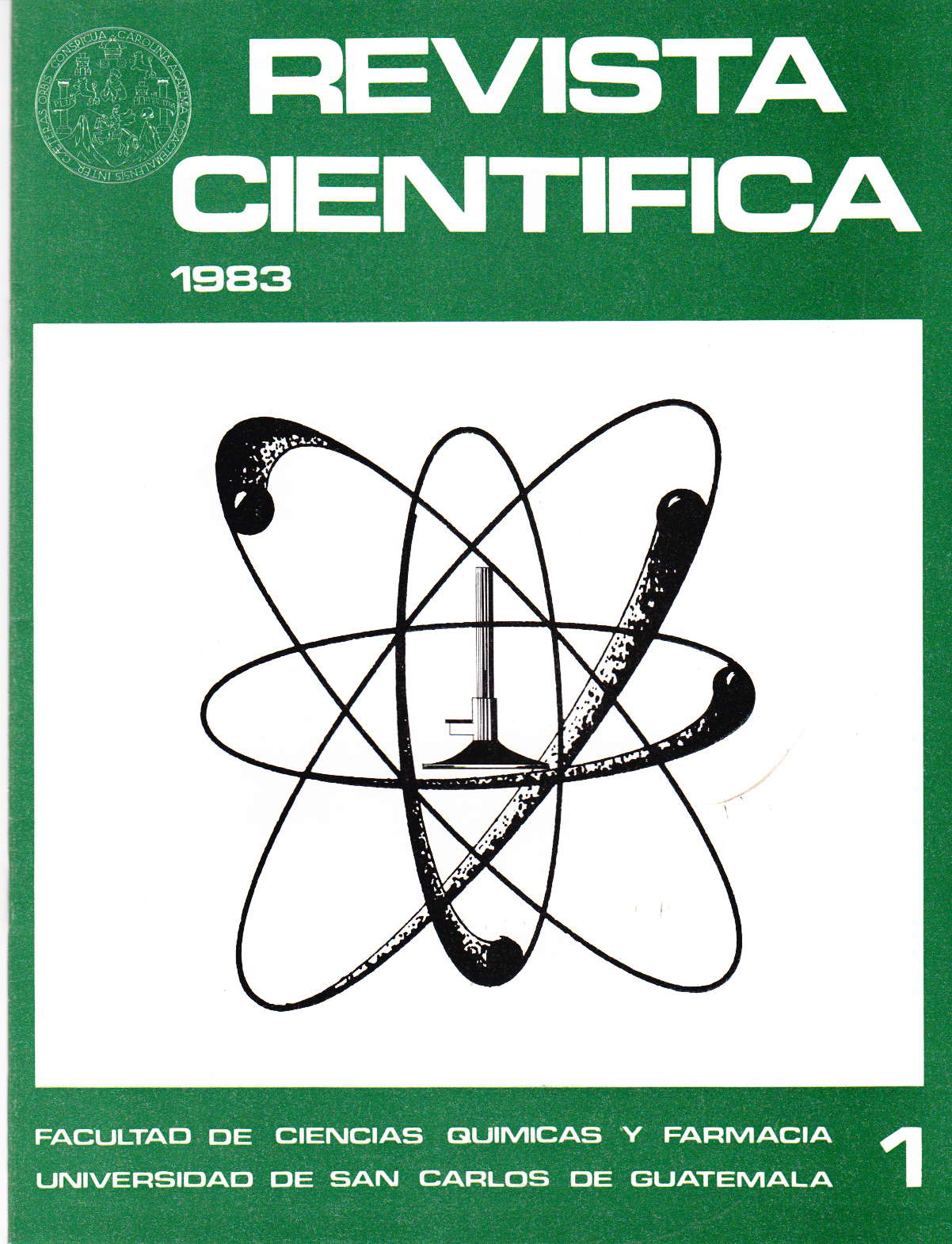Presence of soluble lead in glazed ceramics typical of Guatemala
DOI:
https://doi.org/10.54495/Rev.Cientifica.v1i1.483Keywords:
presence, soluble lead, glazed ceramics, GuatemalaAbstract
Soluble lead levels were determined in randomly selected samples of fine and coarse glazed pottery from regional centers in the country where most of the typical glazed pottery originates (Jalapa, Totonicapán, and Antigua Guatemala). This study was carried out to determine whether this type of pottery constitutes a source of lead poisoning in Guatemala. To determine the amount of soluble lead present in the different pottery pieces studied, a 4% acetic acid extraction method was used for 24 hours, followed by direct determination of the lead present in the extract by atomic absorption spectrophotometry. The ability of different foods and beverages consumed in the country to solubilize the lead present in the glaze of these pieces was also studied. With the exception of the fine-finished glazed pottery from Antigua Guatemala, all the pieces studied released appreciable quantities of lead, with concentrations well above 7 ppm in the 4% acetic acid extracts, which is the maximum limit established in other countries for glazed pottery used in food preparation and/or preservation. A study of the effect of some foods and beverages on glazed pottery showed that acidic beverages such as household vinegar, Coca-Cola, orange juice, and tomato juice released lead from the glaze sufficient to produce acute poisoning in the case of vinegar and chronic poisoning in the case of the other beverages. The only exception, once again, was fine-finished glazed pottery from Antigua Guatemala.
Downloads
References
Durando ML. Niveles de contaminación atmosférica por plomo en la ciudad de Guatemala. Guatemala: Universidad del Valle de Guatemala, (tesis de graduación, Licenciado Químico) 1980.175 p.
Waldron HA, Stófen D. Sub-clinical lead poisoning. London: Academic Press, 1974. X + 224 p. (P. 1 -9).
Harris RW. Ceramic glazes as a source of lead oisoning. JAMA 1967; 202: 544 - 546. https://doi.org/10.1001/jama.1967.03130190150031 DOI: https://doi.org/10.1001/jama.1967.03130190150031
Klein M, Namer R. Lead release from earthenware. N Engl JMed 1970; 283: 1292. https://doi.org/10.1056/NEJM197012032832322 DOI: https://doi.org/10.1056/NEJM197012032832322
Klein M. Earthenware containers as source of fatal lead poisoning. N Engl J Med 1970; 283: 669 - 672. https://doi.org/10.1056/NEJM197009242831302 DOI: https://doi.org/10.1056/NEJM197009242831302
Kenny JB. The complete book of pottery making. New York: Chilton Book Company, 1973. (p. 179 - 214).
Shaw K. Ceramic glazes. London: Elsevier Publishing, 1971. (p. 38-140).
Krinitz B, Franco V. Colaborative study of an atomic absorption method for the determination of lead and cadmium extractad from glazed ceramic surfaces. J Ass Off Analyt Chem 1973; 56 : 869 - 875. https://doi.org/10.1093/jaoac/56.4.869 DOI: https://doi.org/10.1093/jaoac/56.4.869
Krinitz B. Effect of light on the extraction of lead and cadmium from glazed ceramic surfaces. J Ass Off Analyt Chem 1974; 57: 966 - 969. https://doi.org/10.1093/jaoac/57.4.966 DOI: https://doi.org/10.1093/jaoac/57.4.966
Gegiou D, Botsival M. Atomic absorption spectrophotometric determination of lead in beverages and fruit juices and of lead extracted by their action on glazed ceramic surfaces. Analyst 1975; 100: 234 - 237. DOI: https://doi.org/10.1039/an9750000234
Jacobs MB. The analytical chemistry of industrial poisons, hazards and solvents. 2 ed. New York: Interscience Publishers, 1949. (p. 191 -195).
Downloads
Published
How to Cite
Issue
Section
License
Copyright (c) 1983 Delia R. Paniagua de Gudiel, José Héctor Aguilar

This work is licensed under a Creative Commons Attribution 4.0 International License.
Authors who publish with this journal agree to the following terms:
- Authors retain copyright and grant the journal right of first publication with the work simultaneously licensed under a Creative Commons Attribution License 4.0 that allows others to share the work with an acknowledgement of the work's authorship and initial publication in this journal.
- Authors are able to enter into separate, additional contractual arrangements for the non-exclusive distribution of the journal's published version of the work (e.g., post it to an institutional repository or publish it in a book), with an acknowledgement of its initial publication in this journal.
- Authors are permitted and encouraged to post their work online (e.g., in institutional repositories or on their website) prior to and during the submission process, as it can lead to productive exchanges, as well as earlier and greater citation of published work.









